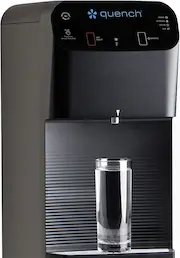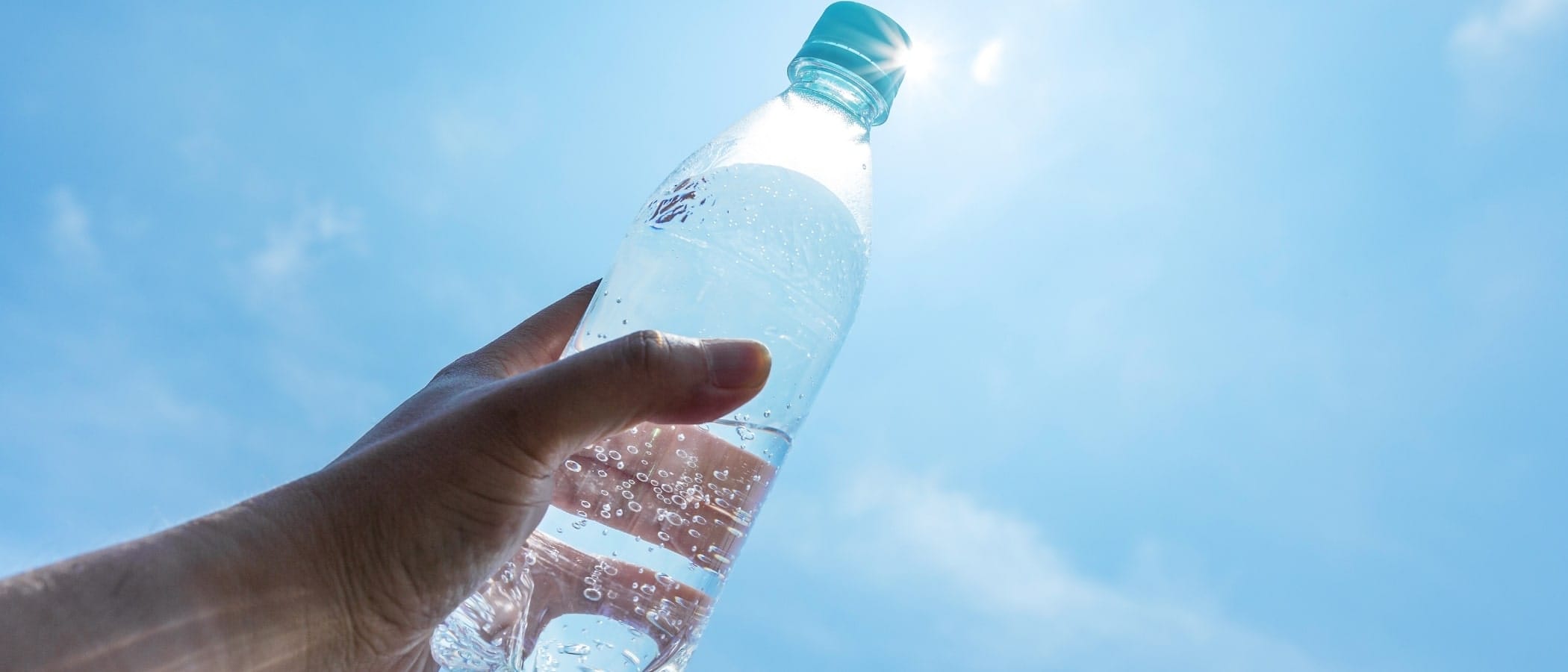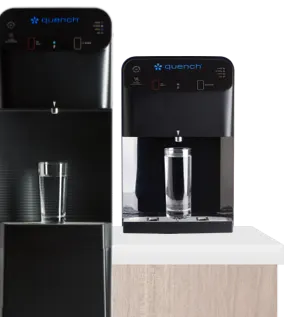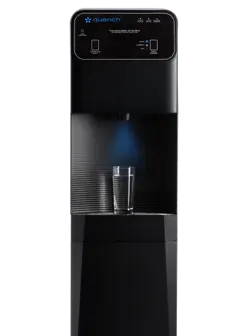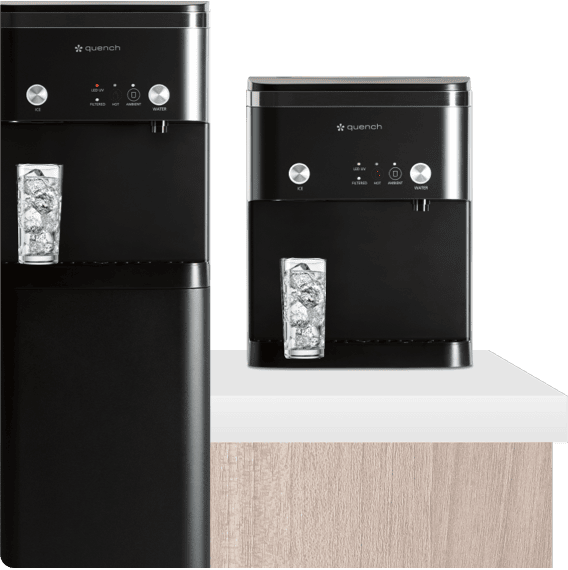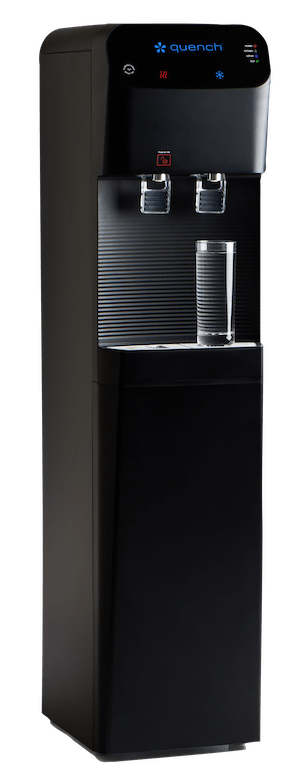This article was last updated on 8/2/2022
Organizations across industries are in need of clean and great-tasting water to keep employee satisfaction, productivity, and overall performance high. However, if your business currently leverages bottled water options at work, there are a few growing concerns that will be critical to consider moving forward — which include understanding the risks associated with leaving unopened bottled water in the heat.
Read on to learn more about the impact of direct sunlight or excessive heat on plastic bottles, and how your organization can effectively avoid these risks to support happier and healthier employees long term.
How Does Heat Affect Bottled Water?
To better understand why it’s critical for employees to avoid drinking water from a warm plastic container, we’re taking a closer look at a study from Elsevier that explores the effect of heat on bottled water in more detail.
Scientists from Nanjing University in China and the University of Florida conducted this study on the effects of storing bottled water at 3 different temperatures: 39°F, 77°F, and 158°F to mimic the temperatures of a refrigerator, standard room temperature, and the inside of a car on a hot summer day. The researchers then checked the levels of 2 substances commonly found in plastic water bottles:
- Antimony: A toxic heavy metal that studies show poses both acute and chronic health effects in drinking water.
- Bisphenol-A (BPA): A synthetic compound believed to be an endocrine disruptor.
During their experiment, the team of Chinese researchers monitored how levels of antimony and bisphenol changed after 1, 2, and 4 weeks at the respective temperatures. Here’s what they found.
The results
As the temperature rose and time passed, increasingly high levels of antimony were detectable in the bottles of water. The plastic water bottle stored at 77℉, in particular, saw the release of antimony increase by almost twice that at the cooler temperatures. However, at 158°F — mimicking the extreme heat inside of a car on a typical summer day — antimony concentrations increased by 319-fold when compared to the levels of the bottled water at the refrigerator temperature. The levels of BPA also indicated a rise at this temperature but not considerably high concentrations.
The Risks of Antimony and BPA In Your Workplace Drinking Water
The aforementioned study from Elsevier indicates that bottled water storage temperature is correlated to the antimony and BPA levels in your workplace water supply. But, what exactly are the risks associated with hot water bottles and rising levels of antimony and BPA?
Considering the dangers of antimony in water
Short-term exposure — days or weeks — to high levels of antimony in water (above 30 mg/L) can lead to symptoms such as:
- Nausea
- Vomiting
- Diarrhea
Chronic, long-term exposure to the substance can lead to more serious health issues for your valuable team members. According to the Environmental Protection Agency (EPA), antimony can have detrimental respiratory effects which include:
- Antimony pneumoconiosis
- Alterations in pulmonary function
- Chronic bronchitis
- Chronic emphysema
- Inactive tuberculosis
- Pleural adhesions
- Persistent irritation
The threat of BPA in water to keep in mind
BPA is used in the production of plastics and is typically found in single-use water bottles and other types of plastic food packaging. While the FDA is still working to fully understand the impacts of BPA on our bodies, this can ultimately pose another threat to your workplace drinking water. According to WebMD, the main areas of concern associated with the impact of BPA include:
- Disrupting normal hormone levels and development in fetuses, babies, and children.
- Linking BPA exposure to an increased risk of cancer.
- Causing negative effects on the developing brain of children.
- Increasing the risk of cardiovascular disease.
- Leading to other conditions such as obesity, diabetes, and ADHD.
How to avoid BPA and antimony effectively
After recognizing the risks associated with high levels of antimony or BPA in your workplace drinking water, it will be vital to find the best strategies to keep those dangerous substances away from your employees, guests, and customers — especially for organizations that leverage bottled water delivery. Antimony and BPA are commonly found in single-use plastic water bottles, which means it will be critical to ensure your workforce isn’t drinking out of plastic bottles after they’ve been stored in the heat for too long or spent hours in the sunlight or a hot delivery truck. Keep in mind, that the hotter a plastic bottle is, the more BPA and antimony are likely to leach into the water within.
An effective way for organizations to reduce the possibility of antimony or BPA in their workplace water supply is to replace single-use plastic bottles with reusable water bottles made of BPA-free plastic, glass, or stainless steel. A reusable water bottle is not only a healthier choice for your employees, but better for the planet as well — which is ultimately a boon to your sustainability practices.
Making the Switch to a Water Filtration System
As organizations increasingly introduce reusable water bottles to eliminate the possibility of exposure to antimony or BPA from single-use plastic, many are also making the switch to a water filtration system. With a filtration system in place, employees can fill their reusable water bottles with filtered water — which is often better for you than water from a plastic bottle. This water supply is endless, easy to access, and great-tasting — providing purified water without the risks associated with warm plastic bottles.
A great example of the clean, filtered water that’s likely to drive hydration is quenchWATER+ found in Quench Q-Series bottleless water coolers. quenchWATER+ is made through a 5-step filtration system that purifies tap water and then adds back hydrating minerals like magnesium, potassium, and sodium. Those hydrating minerals, known as electrolytes, can hydrate your employees faster and give them the energy they need to take on tasks successfully.
These water solutions from Quench are:
- More eco-friendly: Sustainability matters today more than ever. Organizations can support sustainability and reduce their environmental impact by taking advantage of bottleless water coolers with water filtration capabilities.
- Healthier: Bottled water is associated with microplastics, contaminants, and other toxic chemicals that can have adverse effects on your teams. Advanced filtration technology can successfully remove contaminants for better results and healthier employees.
- More cost-efficient: The costs of bottled water delivery quickly add up. It’s significantly more cost-efficient to leverage a water installation and filtration system in the long run.
Click here to learn more about the filtration advantages you get with quenchWATER+.
Find a Bottleless Water Cooler That’s the Right Fit With Quench
Ready to make the switch from single-use bottles to safer, reusable ones? Quench supports you in that decision. To ensure you and your colleagues are never far from a water bottle filling station, Quench offers a wide range of bottleless water coolers for the workplace.
Quench bottleless water coolers install virtually anywhere and can connect right to your building’s existing water line. Moreover, Quench systems filter tap water on-site using advanced filtration and sanitization technologies, like reverse osmosis, ultraviolet sanitization, and antimicrobial surface protection. So, when you fill your reusable, BPA-free drinkware with a Quench bottleless water cooler, you drastically reduce the risk of exposure to dangerous contaminants.
Try our product finder to discover the bottleless water dispenser that fits your organization’s unique needs or get a free quote to get started.
